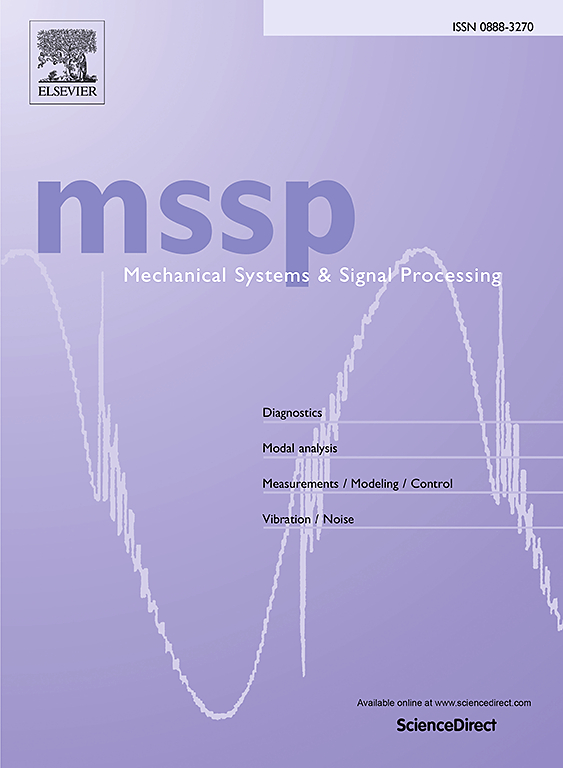Principle, design and characterization of a human-inspired flexible mechanism for capturing non-cooperative targets
IF 7.9
1区 工程技术
Q1 ENGINEERING, MECHANICAL
引用次数: 0
Abstract
Inspired by the biomechanics of human shoulder and elbow joints, this study proposes a novel 4-DOF human-inspired flexible mechanism (HIFM). The HIFM integrates a dual-mode operational characteristic that combines rigidity and flexibility, with a particular emphasis on its flexible mode, which significantly enhances the safety and stability of capturing non-cooperative targets. First, a dynamic model of the flexible spacecraft system, incorporating the HIFM and a post-capture compound spacecraft with active attitude control, is developed using Kane’s method. Second, a series of simulations, including numerical and virtual prototype testing, as well as experimental validation using an air-flotation microgravity testbed, are conducted to assess the HIFM’s performance. Comparative analysis with a single-DOF bio-inspired isolation (BII) system and traditional rigid capture method demonstrates that the HIFM exhibits superior omnidirectional buffering performance during the capture phase, achieving a peak values of impact force-torque reduction of up to 84.11% while effectively preventing abrupt changes in the motion state of the spacecraft base. In addition, the HIFM significantly enhances the controllability and robustness of the post-capture compound system, achieving 37.5% reduction in attitude adjustment time and 1.42% decrease in energy consumption. Moreover, the HIFM extends the contact duration between the target and the service spacecraft by at least 2000%, thereby creating a critical operational window for the capture mechanism. Overall, this study not only provides a theoretical and practical framework for passive compliance mechanisms in non-cooperative targets capture but also lays the groundwork for future research on optimization control for space missions. These findings significantly enhance the reliability and efficiency of spacecraft servicing operations.
一种人类启发的捕获非合作目标的灵活机制的原理、设计和特性
受人类肩关节和肘关节生物力学的启发,本研究提出了一种新型的四自由度仿人柔性机构(HIFM)。HIFM集成了刚性和灵活性相结合的双模式作战特性,特别强调其灵活模式,大大提高了捕获非合作目标的安全性和稳定性。首先,利用Kane方法建立了包含HIFM和主动姿态控制的后捕获复合航天器的柔性航天器系统动力学模型。其次,进行了一系列的仿真,包括数值和虚拟样机测试,以及在气浮微重力试验台上的实验验证,以评估HIFM的性能。与单自由度生物隔离(BII)系统和传统刚性捕获方法的对比分析表明,HIFM在捕获阶段表现出优越的全方位缓冲性能,在有效防止航天器基座运动状态突变的同时,实现了高达84.11%的冲击力矩减小峰值。此外,HIFM显著增强了捕获后复合系统的可控性和鲁棒性,姿态调整时间减少37.5%,能量消耗减少1.42%。此外,HIFM将目标和服务航天器之间的接触持续时间延长了至少2000%,从而为捕获机制创造了一个关键的操作窗口。总体而言,该研究不仅为非合作目标捕获的被动顺从机制提供了理论和实践框架,而且为未来空间任务优化控制的研究奠定了基础。这些发现大大提高了航天器维修操作的可靠性和效率。
本文章由计算机程序翻译,如有差异,请以英文原文为准。
求助全文
约1分钟内获得全文
求助全文
来源期刊

Mechanical Systems and Signal Processing
工程技术-工程:机械
CiteScore
14.80
自引率
13.10%
发文量
1183
审稿时长
5.4 months
期刊介绍:
Journal Name: Mechanical Systems and Signal Processing (MSSP)
Interdisciplinary Focus:
Mechanical, Aerospace, and Civil Engineering
Purpose:Reporting scientific advancements of the highest quality
Arising from new techniques in sensing, instrumentation, signal processing, modelling, and control of dynamic systems
 求助内容:
求助内容: 应助结果提醒方式:
应助结果提醒方式:


